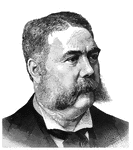
General Chester A. Arthur
"General Arthur, twenty-first President of the United States, born in Fairfield, Franklin County, Vt.,…
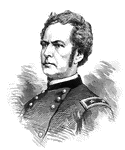
General Joseph Hooker
"General Hooker, born in Hadley, Mass., November 13th, 1814, died in Garden City, N. Y., October 31st,…

Edward's Ferry
"Edward's Ferry, Md., below Harrison's Island, on the Potomac River, the place of the passage of General…

Camp Douglas
"Bird's-eye view of Camp Douglas, Chicago, Ill., used for the detention of Confederate prisoners in…

Shannon
"Firing on the schooner Shannon, laden with ice, from the battery on Morris Island, Charleston…

Tybee Island
"Tybee Island, Savannah River, Ga.- Views of the lighthouse and barracks- destruction of the lighthouse…

Mortar Battery Stanton
"Interior of the Mortar Battery Stanton, Tybee Island, Ga., showing the operation of 13-inch mortars…
General Hospital Exterior
"United States General Hospital, Hilton Head, S. C., exterior. The United States General Hospital at…

General Hospital Interior
"United States General Hospital, Hilton Head, S. C., interior. The United States General Hospital at…
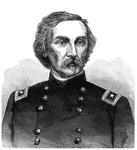
General Gouverneur K. Warren
"General Warren, born in Cold Spring, N. Y., January 8th, 1830, died in Newport, R. I., August 8th,…
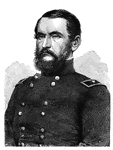
General John James Peck
"General Peck, born at Manlius, N. Y., January 4th, 1821, died at Syracuse, n. Y., April 28th, 1978,…
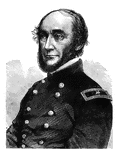
General George W. Cullum
"General Cullum, born in New York city, February 25th, 1809, died in New York city, February 28th, 1892,…

Battle of New Berne
"Battle of New Berne- Lieutenant Hammond capturing Colonel Avery, of South Carolina, while he was endeavoring…
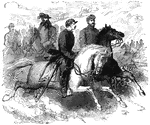
Federal Cavalry Leaders
"Federal Cavalry Leaders. Generals Pleasonton, Bayard and Colonel Percy Wyndham making a reconnoissance,…
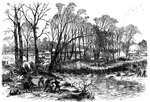
Battle of Stone River
"Battle of Stone River, Tenn. The decisive charge of General Negley's division across the river- the…

Army of the Potomac
"Army of the Potomac recrossing the Rappahannock from Fredericksburg to Falmouth, on the night of Monday,…
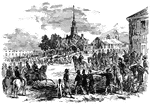
Kentucky Raid
"The raid in Kentucky- the Confederate Morgan with his guerillas bivouacking in Courthouse Square, Paris,…

Lake Providence
"Lake Providence, La., headquarters of General McPherson and the Federal division under his command.…

Port Hudson
"The advance of Port Hudson. The baggage train of General Augur's division crossing the Bayou Montecino,…

Winter Quarters
"Winter quarters on the Rappahannock- army huts of the One Hundred and Nineteenth Regiment, Pennsylvania…

Battle of Antietam
"Battle of Antietam. The centre and right wing of General McClellan's Army, commanded by Generals Hooker,…

Battle of Stone River
"Battle of Stone River, Tenn. Decisive charge and capture of Byrne's Confederate battery by the Seventy-eighth…

Siege of Vicksburg
"Siege of Vicksburg- the fight in the crater of Fort Hill after the explosion, June 27th, 1863. Our…

Battle of Gettysburg
"Battle of Gettysburg, Cemetery Hill during the attack of the Confederates, Thursday evening, July 2nd,…
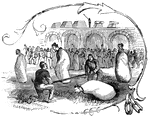
Hurdle Sack Race
"Federal soldiers participating in a hurdle sack race. Thanksgiving festivities at Fort Pulaski, Ga.,…
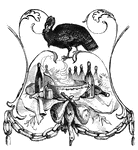
Thanksgiving Dinner
"Thanksgiving dinner. Thanksgiving festivities at Fort Pulaski, Ga., Thursday, November 27th, 1862.…
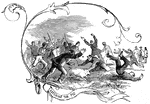
Catching the Pig
"Soldiers playing 'catch the pig.' Thanksgiving festivities at Fort Pulaski, Ga., Thursday, November…

Burlesque Dress Parade
"Soldiers participating in a burlesque dress parade. Thanksgiving festivities at Fort Pulaski, Ga.,…

Thanksgiving Ball
"Soldiers and women participating in a Thanksgiving Ball. Thanksgiving festivities at Fort Pulaski,…
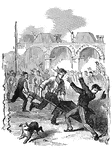
Wheelbarrow Race
"Soldiers aparticipating in a wheelbarrow race. Thanksgiving festivities at Fort Pulaski, Ga., Thursday,…
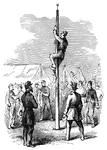
Climbing Pole
"Soldiers climbing up a greased pole. Thanksgiving festivities at Fort Pulaski, Ga., Thursday, November…

Garibaldi Guards
"Camp of the Garibaldi Guards, Colonel D'utassy, near Roche's Mills, Va., Potomac River in the distance.…

War Dance
"Camp life in the West. During one of the pauses in the active part of the Missouri campaign our special…
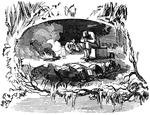
Midnight in the West
"Camp life in the West. During one of the pauses in the active part of the Missouri campaign our special…
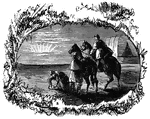
Sunrise in the West
"Camp life in the West. During one of the pauses in the active part of the Missouri campaign our special…
Hundred Mile Prairie
"Camp life in the West. During one of the pauses in the active part of the Missouri campaign our special…
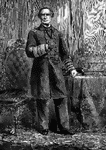
Admiral David G. Farragut
"Admiral Farragut, born at Campbell's Station, near Knoxville, Tenn., July 5th, 1801, died in Portsmouth,…

Ironclad Georgia
"Confederate ironclad ram Georgia lying off Fort Jackson, Savannah River, Ga., December 1862."—…
Fort Taylor
"Fort Taylor, Key West, Fla. Key West, the most western of the Pine Islands, is about sixty miles southwest…

Harrison's Landing
"Harrison's Landing, James River, Va. The commissariat depot and base of operations of General McClellan…

Battle of Chancellorsville
"Battle of Chancellorsville, Va., Friday, May 1st, 1863. We give a fine sketch of the point where the…
Hooker's Headquarters
"General Hooker's headquarters at Chancellorville, May 1st."— Frank Leslie, 1896

Battle of Chancellorsville
"Battle of Chancellorsville, Va. Attack on General Sedgwick's Corps. on Monday, May 4th, 1863, at 5…
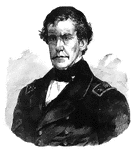
Rear Admiral Charles Wilkes
"Rear Admiral Wilkes, born in New York city, April 3rd, 1798, died in Washington, D. C., February 8th,…
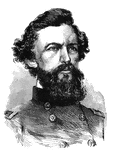
General Robert Patterson
"General Patterson, born in Cappagh, County Tyrone, Ireland, January 12th, 1792, died in Philadelphia,…
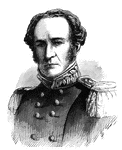
General George Stoneman
"General Stoneman, born in Busti, Chautauqua County, N. Y., August 8th, 1822, was graduated from the…

Explosion
"Explosion of 3,000 musket cartridges in a tent at Fort Totten, New Berne, N. C., the headquarters of…
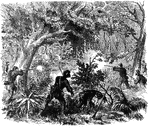
Advance to Vicksburg
"Skirmishing in the woods, on the advance to Vicksburg. Our artist presents a most beautiful scene,…
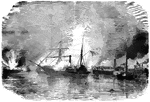
Harriet Lane
"Daring and desperate attack- surprise and capture of the United States gunboat Harriet Lane…

Banks Expedition
"The Banks Expedition- scene on the hurricane deck of the United States transport North Star-…

Butchering Cattle
"Butchering and dressing cattle for distribution to the Federal Army. The romance and reality of life…

Falmouth
"Federal troops marching back into Falmouth after the Battle of Chancellorsville."— Frank Leslie,…

Battle of Blue Ridge Pass
"Battle of Blue Ridge Pass, Sunday, September 14th, 1862- the first Federal victory in Maryland. On…

Anne
"Capture of the British steamer Anne laden with arms and munition of war for the Confederates,…
Commissariat Depot
"Commissariat Depot of the United States Army of the Rappahannock at Manassas, Va. Our sketch shows…


